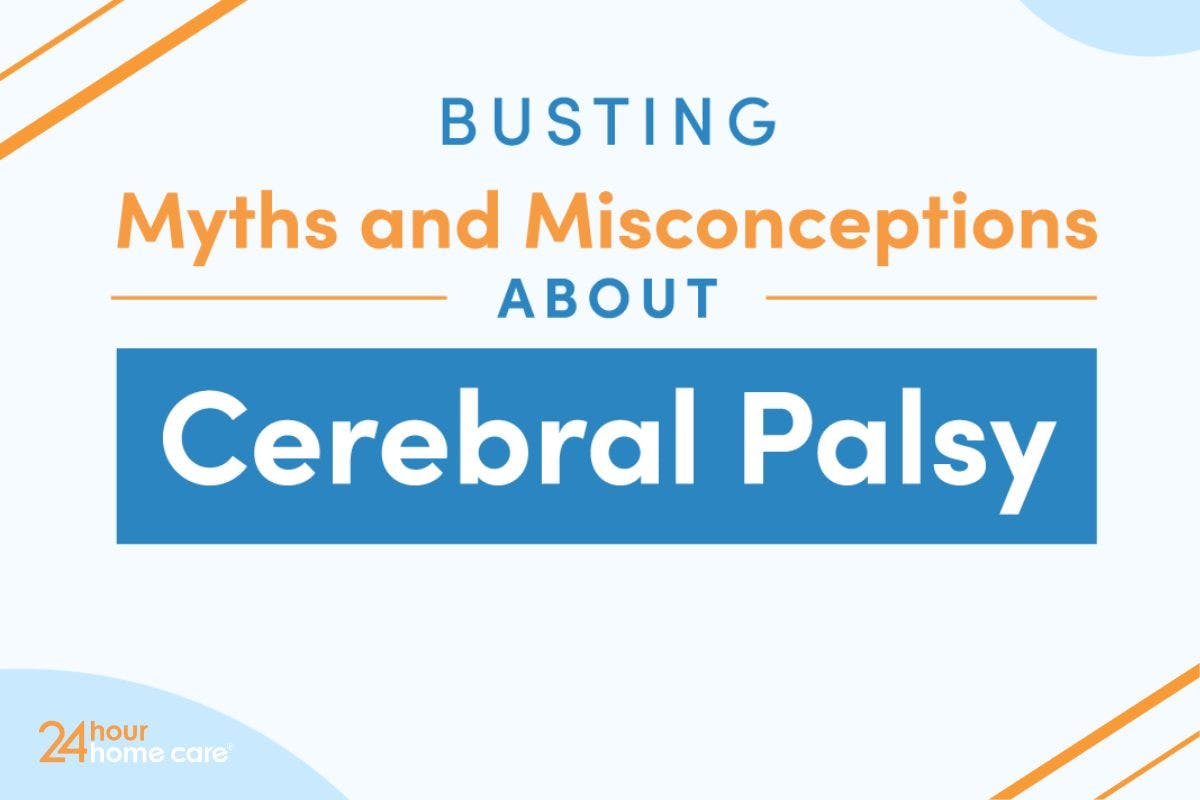Myths and Misconceptions about Cerebral Palsy

Cerebral Palsy is a permanent motor disability that begins in early childhood. It is the most common motor disability in children, nearly 1 in every 345 children is identified with a form of CP, according to the CDC.
Though this disorder is very common, we’ve seen a lot of myths and misconceptions about Cerebral Palsy. To celebrate Cerebral Palsy Awareness Day, we’re busting some of the most common myths about Cerebral Palsy.
Myth: There is only one type of Cerebral Palsy
Truth: Cerebral Palsy is different for every person who has it. Not only are there different types of Cerebral Palsy, but the disability also has a spectrum. Some people might not be too affected by their Cerebral Palsy, while others may have problems with the activities of daily life. This all depends on the type of Cerebral Palsy a person has and how severe it is.
There are four distinct types of Cerebral Palsy, they are:
- Spastic Cerebral Palsy – This is the most common type of Cerebral Palsy. Spastic Cerebral Palsy causes individuals to have increased muscle tone and can appear stiff or awkward. This type of Cerebral Palsy can affect movement in the arms, movement in the legs, and can partially be caused by significant brain damage or malformations.
- Dyskinetic Cerebral Palsy – This form of Cerebral Palsy presents itself as uncontrollable, slow jerky movements in the arms, legs, hands, or feet.
- Ataxia Cerebral Palsy – Individuals with Ataxia Cerebral Palsy experience issues with balance and depth perception. Children with this type of Cerebral Palsy can walk with a wide gait and have challenges with coordination.
- Mixed Types of Cerebral Palsy – Sometimes a person will present with different or multiple types of Cerebral Palsy.
Myth: Cerebral Palsy is a developmental disability
Truth: Cerebral Palsy mostly affects movement and posture. Although Cerebral Palsy itself impacts motor skills, studies have shown that nearly 50% of children and adults with Cerebral Palsy have a second condition. According to the CDC, about 4 of every 10 children with Cerebral Palsy also have epilepsy, while 1 in 10 have a form of autism.
Myth: People with Cerebral Palsy can’t live independently
Fact: Mobility aids and in-home care make it possible for adults with Cerebral Palsy to live independent lives. Having Cerebral Palsy does not stop anyone from having meaningful relationships, children of their own, or a happy life. The severity and type of Cerebral Palsy will determine everyone's independence, items such as mobility aids and in-home care can make it possible for adults with Cerebral Palsy to live independently.
Myth: We know what causes Cerebral Palsy
Fact: We don’t know what causes Cerebral Palsy. It’s been proven that some cases of Cerebral Palsy are caused by brain damage before or during the process of birth. But this is for only some types of Cerebral Palsy. Infections during pregnancy can also cause Cerebral Palsy. For many years, it was thought that a lack of oxygen during the birth process causes Cerebral Palsy; however, scientists learned that lack of oxygen only causes a few cases of Cerebral Palsy, not all.
Overall, it is important to remember that individuals with Cerebral Palsy are capable of much more than one might assume. As we uncover more truths about this specific disability, it is important to support their abilities and not assume their capabilities. We hope this helped dispel some of the myths and misconceptions surrounding Cerebral Palsy. To learn more about Cerebral Palsy, check out the CDC’s list of resources, Cerebral Palsy Foundation, and CerebralPalsy.org.
